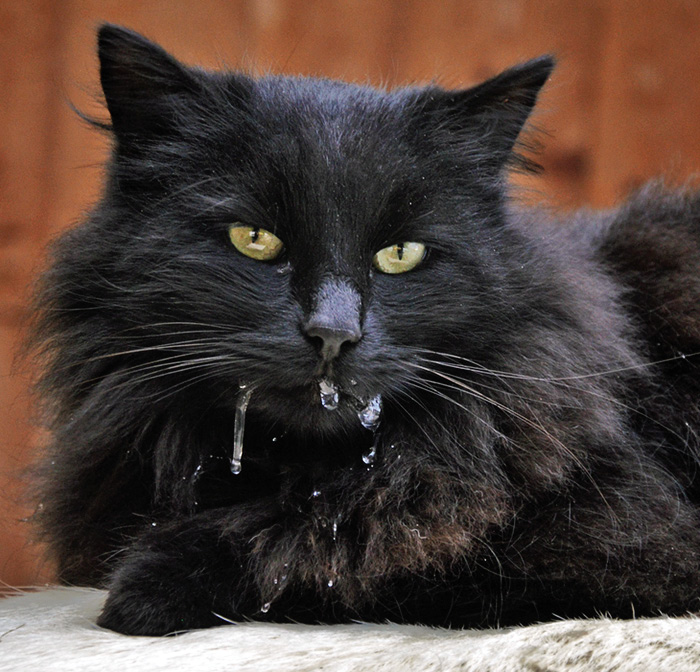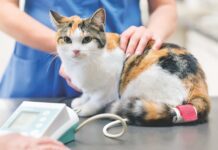Drooling in cats isn’t always normal, but it isn’t always cause for concern either. This behavioral manifestation may occur when a cat is happy and relaxed or stressed and anxious. Otherwise, drooling may indicate something is wrong.
Behavior
“Many cats purr when their owners pet them, and some of those cats also drool. One theory as to why they drool while purring is that the kitty may be associating the comfort of interacting with the owner with the memories of feeding time when she was a kitten (i.e., due to classical conditioning),” says Pamela J. Perry, DVM, PhD, behavior resident at the Cornell University College of Veterinary Medicine.
“Although endorphins may be involved, there are no studies, to my knowledge, that have investigated the physiological reason for drooling while purring. In any case, unless the cat has an underlying medical issue (e.g., dental disease), I always attribute the drooling to being very relaxed and content,” says Dr. Perry.
More Worrisome Reasons
A host of other far less benign things can cause drooling in cats, including:
Dental diseases. Consider gingivitis, stomatitis (inflammation in the back of the mouth), periodontal disease, and painful teeth due to a fractured tooth or tooth resorptive lesions.
Oral trauma. This may occur when electrical cords or sharp objects are bitten or a foreign body, like string that gets wrapped around the base of the tongue, is ingested.
Eosinophilic granulomas complex. This painful, inflammatory condition can occur in and around the mouth.
Neoplasia. Cancer in the mouth, especially older cats.
Ulcers. Some examples include uremic ulcers in cats suffering from kidney failure and oral ulcers caused by calicivirus, one of the upper respiratory complex infectious agents in cats.
Toxins. Caustic substances, some mushrooms, some toads, and permethrins, which are agents commonly used in dog flea and tick products. These are potentially life-threatening situations.
Infectious agents. Culprits include upper respiratory disease agents (herpesvirus, calicivirus, chlamydia, mycoplasma, bordetella), bartonella (a bacteria that is spread by fleas frequently resulting in severe gingivitis), and rabies.
Gastrointestinal distress and nausea. This includes brain tumors, bacterial, viral, fungal, or protozoal infections of the central nervous system, and portosystemic shunts.
Neurological disease. This includes brain tumors, bacterial, viral, fungal, or protozoal infections of the central nervous system, and portosystemic shunts (see “Brain Problems” later in this issue).
Bottom Line
Many causes of drooling in cats can be successfully treated, and the sooner the underlying cause is treated, the sooner your cat will feel better.ν



